Beverly Gray's Blog: Beverly in Movieland, page 13
July 19, 2024
A Slow, Sad Remembrance of Video Master Bill Viola

Some twenty years ago, I waslooking at Baroque religious paintings at Chicago’s Art Institute when my eyewas caught by something strange. One of the paintings was life-sized, and whenI studied the female figures it depicted, I realized they seemed to be moving towardone another . . . very, very slowly.Surely, I thought, there was no such thing as a movie back in the 16thcentury. This work, despite its long-ago style, had to have been created in myown era.
And so it was. This movingpainting was made by Bill Viola, a pioneering video artist. I later learned itis called “The Greeting,” and was inspired by Italian master Pontormo’s workdepicting Mary approaching her cousin Elizabeth to confide that she is withchild. I have since sought out Viola’s strikingly mystical videos in othervenues, like L.A.’s Getty Center. One of the great evenings of my life wasspent at the Los Angeles Music Center, watching an act of Wagner’s opera Tristanand Isolde, as directed by the always-innovative Peter Sellars. As part ofthe so-called Tristan Project, Sellars invited Viola to contribute semi-abstractvideo sequences that—again in ultra-slow motion—backed the on-stage singers,contributing an otherworldly dimension to the famous love story. Other Viola workpops up in surprising places: two so-called video altarpieces are on permanentdisplay in London’s St. Paul’s Cathedral.
I was recently shocked tolearn that Viola has passed away, at age 73. Alas, he had succumbed to a longstruggle with Alzheimer’s Disease. A very sad and ironic end for someone whowas once so life-affirming. I know,because back in 2008, I had a long, fascinating conversation with Viola at hishome in Long Beach, California. Reasoning that a man who had devoted his lifeto video art would have some interest in movies, I approached him on behalf ofa project I was working on about the films of the late Sixties and earlySeventies. In that era he had been at art school in Syracuse, New York,studying the work of avant-garde filmmakers like Stan Brakhage and Maya Deren.For him and his classmates, Hollywood was a kind of enemy, and narrative film alimitation on what they were trying to achieve. And, in any case, “the big boyshad all the money.”
Still, commercial movies madea strong impression on him, beginning with his childhood viewing of KingKong. Then in 1968 Kubrick’s 2001: A Space Odyssey had a profound impact:“My brain didn’t understand it, but mybeing totally got it. And years and years later I was still living on imagesfrom that movie and the pacing of that movie.” What he describes as “the soundof emptiness” in Kubrick’s film connected nicely with his own later Zenstudies. And he never forgot 2001’s “image of the guy floating untethered out in space, and . . . what fills the theatre, fills your mind, isthe sound of his breathing. Like the breathing’s inside your head, and he’s inthe largest, most infinite space that is known to exist.”
Describing himself as someonewho lives and breathes images, Viola reminisced about what he’d taken from AndyWarhol’s cinematic experiments regarding the passage of time. But he alsolearned from commercial films like The Graduate (“I remember being aware of camera movement inthat film”), Days ofHeaven ( “Those long shots ofthose prairies, the vast emptiness of the space”) and A Hard Day’s Night (“Amainstream experimental film.”)
I’ll never forget myconversation with this fascinating man. Farewell!
July 16, 2024
“Funny Girl” Goes to the Movies

Not long ago, I watchednewcomer Katerina McCrimmon make her Ahmanson Theatre debut in the road companyof the Broadway revival of Funny Girl. Thereviews of her performance in the leading role were ecstatic. Of course thiswas the 1964 stage musical that had once made an star of Barbra Streisand, whothen followed it to Hollywood and never left. It’s the story of Vaudevillelegend Fanny Brice, who headlined the famous Ziegfeld Follies revues in the1920s, then eventually brought her comedy chops and her powerful singing voiceinto films and radio.
This century’s Funny Girl revivalfirst starred Beanie Feldstein, a lively film performer (see Booksmart) whowas judged to lack the singing skills needed to impersonate Brice. She wasquickly replaced by TV favorite Lea Michele (Glee). Michele instantlywon raves in a role for which she may have been auditioning when performingBrice’s torchy theme song, “My Man,” at a Grammy charity event. As a SouthernCalifornian, I didn’t get to see Michele onstage, so McCrimmon would have todo. No question she’s a powerhouse singer, as well as an appealing stagepresence, though actually impersonating Brice seems beyond her. For one thing, she can’t match Brice’sdistinctive physical presence: whereas Brice was relatively tall, angular, andgawky, McCrimmon is short and curvy. Some of the show’s naughtiest lyrics(“When a girl’s incidentals are no bigger than two lentils . . .”) don’t matchher bosomy physique at all.
The chance to finally see FunnyGirl on stage made me curious about the show’s history. The original stageand screen versions were produced by Hollywood insider Ray Stark, who justhappened to be married to Brice’s daughter, and thus had a vested interest inmaking the character of Fanny as lively as possible. She’s also capable, smart,self-conscious of her looks, and has lousy taste in men. That’s what I tookaway from the stage production: the notion that a savvy and talented woman isdumb enough to sacrifice everything for a guy who doesn’t deserve her. NickyArnstein was, in reality, a swindler and a cad. The stage version softens thedetails of his life, but giving him a big ballad about feeling threatened byhis wife’s fame doesn’t make him any more appealing.
Pondering this, I turned tothe writings of Ethan Mordden, whose 2019 On Streisand: An Opinionated Guideis a deep dive into the whole of Barbra Streisand’s career on stage, discand film. Mordden lays out the backstage challenges of the stage version (forone thing, the very green Streisand felt she was right about pretty mucheverything). But the film? As directed by Hollywood veteran William Wyler, itcaptures Streisand’s remarkable similarity to Brice, adds some terrificallygoofy Ziegfeld Follies showstoppers, enhances “Don’t Rain on My Parade” with aspectacular ride on a train and a New York Harbor tugboat, and removes somesongs no one will miss. The casting of the Egyptian Omar Sharif as the Jewish-AmericanNicky Arnstein is a misstep: he looks dashing, but his performance is prettymuch one note. It’s a plus, though, that he is deprived of any plaintiveballads in the second half. Perhaps the best thing about the film is that itadds in some actual Brice material, like “Second-Hand Rose” and (as a grandfinale) Streisand soulfully belting out “My Man,” as only she can. I’ve never really been a Streisand devotee,and I’ve disliked her over-the-top style in other projects, but this is aperformance for the ages.
July 12, 2024
Thelma (Without Louise)
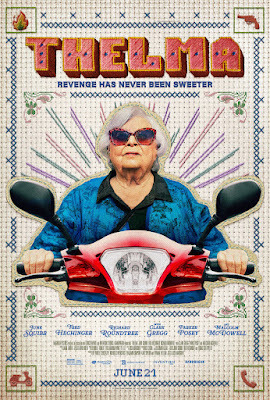 Old age is not for sissies. That’sone of the lessons taught by the new indie film, Thelma, which is nowdelighting cineplex audiences. It’s far less fanciful than The Old Man &the Gun, the 2018 caper film thatstarred an octogenarian Robert Redford as an ageing bank robber with no desireto go straight. In Thelma, the challenges of negotiating one’s advancedyears are not minimized, at the same time that the leading lady (93-year-oldJune Squibb) shows just how resourceful an angry grandma can be.
Old age is not for sissies. That’sone of the lessons taught by the new indie film, Thelma, which is nowdelighting cineplex audiences. It’s far less fanciful than The Old Man &the Gun, the 2018 caper film thatstarred an octogenarian Robert Redford as an ageing bank robber with no desireto go straight. In Thelma, the challenges of negotiating one’s advancedyears are not minimized, at the same time that the leading lady (93-year-oldJune Squibb) shows just how resourceful an angry grandma can be.Thelma, it seems, has a closerelationship with her grandson, a 20-something slacker who adores her but hasnot yet figured out the whole process of adulting. When a phone call tells herthat he’s been in a terrible accident and that she needs to cough up the bigbucks to clear his name, she doesn’t hesitate to comply. It’s a scam, ofcourse, but she doesn’t take lightly the fact that she’s been both fooled androbbed of $10,000 in cash, which she delivered (as instructed) to a P.O box.Revenge is definitely on her mind.
Thelma, at 93, is a recentwidow, one who’s still capable of managing her tidy home. She’s well-equippedwith the tools of modern living—a cellphone and a laptop computer—but theirmore sophisticated functions tend to boggle her nonagenarian mind. (Honestly, Ido sympathize.) Online banking, for one thing, seems far beyond her abilities,but in the course of this film she’ll need to gather her wits about her, andlearn to seek help wherever she can find it.
This latter point is key:through most of the film, Thelma is so convinced of her own abilities that shedisdains asking anyone for assistance. Certainly her easily frazzled daughter(Parker Posey) and her acerbic son-in-law (Clark Gregg) are too busy worryingabout her physical and mental state to be much help. As she’s soon to discover,most of her old friends are dead or incapacitated: one still livesindependently, but seems unaware that her large old house is infested withroaches. An unexpected source of strength is Ben, a former travel companion whonow (since the death of his wife) makes his home in an assisted livingfacility, where he is starring as Daddy Warbucks in an in-house production of Annie.He’s played by the charmingly mellow Richard Roundtree: the film firstscreened after his 2023 death (at age 81) from pancreatic cancer. Roundtree is,of course, best known for his iconic title role in the 1971 blaxploitation hit,Shaft. In Thelma he’s no longer a tough guy who’s quick on thetrigger, but he still remains unforgettable. And he and Squibb play off of oneanother—sometimes amiably, sometimes testily—like the old pros they are.
But in many ways the keyrelationship in Thelma is that between the title character and hergrandson, winningly portrayed by young Fred Hechinger. The love between them iseasy to see, as is the faith they feel in each other’s smarts. Writer/director JoshMargolin unabashedly modeled the title character after his own magnificentlyfeisty Grandma Thelma, who once almost fell for a similar scam. Says Margolin, ‘Iwanted to explore her fight for what’s left of her autonomy just as I wasbeginning to consider mine.” He chose an action drama of sorts because “as faras I’m concerned, watching my grandma get onto a high mattress is as thrillingand terrifying as Tom Cruise driving a motorcycle off a cliff.” The real Thelma,glimpsed in the film’s coda, is now 103 years young.
July 9, 2024
L.A. Weather and “Chinatown”

As a longtime volunteer withthe Santa Monic Public Library system, I’m reading a new best-seller called L.A.Weather, by María AmparoEscandón. It concerns a family with Mexican and Old Californiaroots, ambitiously folding in almost every touchstone 21st centuryconcern you can think of: sexuality, gender demarcations, surrogate pregnancy, gentrification,religious practices, divorce, and complex family dynamics. (Somehow thequestion of politics only briefly rears its ugly head). But the key issue thatgives the book its title has to do with the complexities of Southern Californiaweather. The book’s central patriarch figure, Oscar, becomes increasinglyestranged from his wife and three daughters as he obsesses over climate changeand its potential impact on his secret almond grove.
I appreciate the novel’sinsider grasp of L.A. geography, and of the ethnic enclaves it chronicles. Amovie based on the book would be an enjoyable tour of Malibu beach houses, eastL.A. barrio bungalows, and orchards set deep in the San Fernando Valley. I’venever done a scientific study, but it’s been pointed out to me that most upbeatscreen love stories are set in New York (see, for instance, You’ve Got Mail),while L.A. in the preferred backdrop for dysfunctional futuristic landscapes (Bladerunner,I’m looking at you!) It seems as thoughfilm execs, mostly from the east, come to SoCal to pursue their careers, thenscore with movies that either romanticize the coast they left behind or turntheir new west-coast home into a horror show.
Escandón’s family sagacontains a genuine affection for her adopted hometown, but also seems propheticin that it worries about a climate crisis that threatens to uproot the Alvaradofamily’s sense of well-being. What strikes me, to my surprise, is how thenovel’s key plot strand is the same one that resonates in the late RobertTowne’s script for Chinatown. This 1974 thriller, brilliantly directedby ultimate outsider Roman Polanski, is set in the L.A. of the 1930s, the eraof such famous page and screen detectives as Philip Marlowe. There have beenten or more screen adaptations of Marlowe-related stories, including HumphreyBogart’s 1946 The Big Sleep and Elliott Gould’s 1973 The LongGoodbye. Marlowe films always focus on moral decay and a private-eye herowho tries desperately (and sometimes messily) to create order out of chaos. Butin Chinatown the hero (Jack Nicholson’s Jake Gittes) is less heroic andthe ending is far less tidy than in the Marlowe-related flicks. As a cronymemorably tells Gittes after the unthinkable has happened, “Forget it, Jake,it’s Chinatown.” This climactic line threw me when I first saw the film, but ofcourse I’ve come to accept it as a metaphor for all that’s chaotic and obsceneabout L.A. life. (Really, if you’ve seen this and Bonnie and Clyde, youknow that Faye Dunaway should definitely stay out of moving cars when thugs andcops are around.)
The moral story in Chinatownmay be the one that stays with the viewer, but the plot hinges on astill-resonant L.A. topic: the drought. A key character in the film, L.A. watertsar Hollis Mulwray, is loosely based on a legendary L.A. figure, dam-builderWilliam Mulholland. And we clearly see the tension between San Fernando Valleyfarmers who demand irrigation for their cash crops and City of L.A. residentsworried about their source of drinking water. Those issues still remain,exacerbated by climate change, and we who prefer garden living to making ourhomes in a desert appreciate books and films that point out where we’re goingwrong.
July 5, 2024
Robert Towne and Old Hollywood’s Best Alumni Association
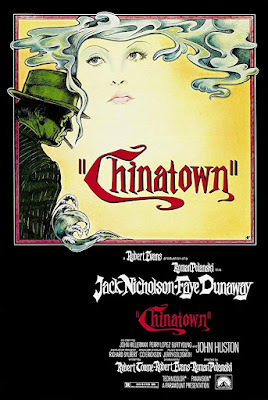 The death of screenwriterRobert Towne on Monday made me lament the passage of time. Towne’s great erawas the Seventies, when he wrote such gritty films as The Last Detail, Chinatown,and Shampoo, while also making vital (though uncredited)contributions to The Godfather and other hits. Though these were allmajor studio pictures, I will long associate Towne with his Roger Corman days,when he played the male lead in Corman’s 1960 cheapie, The Last Woman onEarth, while simultaneously pounding out the script on the set. This wasfilmmaking, Corman style: assemble some ambitious pals and get them to take onas many jobs as possible (for as little money as possible). Eventually, theidea was that they’d find out what they were really good at, and maybe move onto the big bucks. For many would-be Hollywoodites, it worked.
The death of screenwriterRobert Towne on Monday made me lament the passage of time. Towne’s great erawas the Seventies, when he wrote such gritty films as The Last Detail, Chinatown,and Shampoo, while also making vital (though uncredited)contributions to The Godfather and other hits. Though these were allmajor studio pictures, I will long associate Towne with his Roger Corman days,when he played the male lead in Corman’s 1960 cheapie, The Last Woman onEarth, while simultaneously pounding out the script on the set. This wasfilmmaking, Corman style: assemble some ambitious pals and get them to take onas many jobs as possible (for as little money as possible). Eventually, theidea was that they’d find out what they were really good at, and maybe move onto the big bucks. For many would-be Hollywoodites, it worked.Here's the opening of Chapter8 of my independent biography, Roger Corman: Blood-Sucking Vampires,Flesh-Eating Cockroaches, and Driller Killers: RogerCorman and the Academy Awards are not usually mentioned in the same breath. Buton April 8, 1975,many of the big winners had a Corman connection. Best Film and Best DirectorOscars went to Francis Ford Coppola for The Godfather Part II. BestSupporting Actor was Robert De Niro, for his performance in the same gangsterepic. Ellen Burstyn was named Best Actress for Alice Doesn’t Live HereAnymore, directed by Corman alumnus Martin Scorsese. Other nominees thatyear: Talia Shire and Diane Ladd, both up for Best Supporting Actress;cinematographer John Alonzo, whose very first film was Bloody Mama; andJack Nicholson, favored to win Best Actor for his starring role in Chinatown.(The award went instead to Art Carney, for Harry and Tonto, leading Corman tojoke that Nicholson’s loss had spoiled his personal sweep.) Robert Towne, whowon the year’s Best Original Screenplay honors for his Chinatown script,surveyed the glittering multitudes and said, in the presence of reporter BillDavidson from the New York Times Magazine, “This joint looks like ameeting of the Roger Corman Alumni Association.”
For those who aren’t up onCorman’s long career, here’s the lowdown. Coppola, straight out of UCLA’s film school, went to work as a Cormanproduction assistant, then made his directorial debut, 1963’s Dementia 13,with money left over from Corman’s The Young Racers. In 1970, De Nirohad a major role in Corman’s Bloody Mama. Corman produced Scorsese’ssecond film as a director, 1972’s Boxcar Bertha. Talia Shire and DianeLadd both acted in early Corman movies, as did Jack Nicholson, who first metRoger (and Robert Towne) in a Jeff Corey acting class, then went on to play inmultiple Corman movies including The Little Shop of Horrors, TheRaven, The Terror, and his 1958 film debut, The Cry-Baby Killer.Nicholson, who remains deeply appreciative of Corman’s role in his career,recalled for Roger’s own memoir working on films whose budgets were so low thatthe actors all had to share the same script.
Not everyone who worked forRoger in the early days became famous. But take the case of Dick Miller, whostarted out as a would-be screenwriter. Roger saw potential in the short,pugnacious Miller, and cast him in leading roles of films like 1959’s ABucket of Blood. Eventually he became a featured actor (and good-luckcharm) in all the films of a later Corman alumnus, Joe Dante. Eventually hestarred in That Guy Dick Miller, a 2014 documentary made by one of hisfans. I remember Dick well, and I hope the world will remember Robert Townetoo.
July 2, 2024
Bill Cobbs: That Thing He Did!
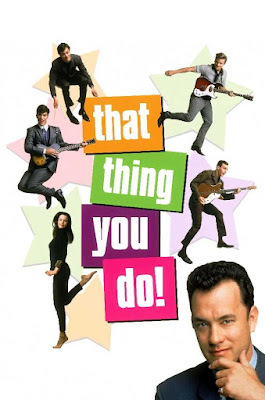
We all know who the big starsare, even if we haven’t always seen their movies. Their faces are on movieposters and magazine covers; their names are embedded on the Hollywood Walk ofFame, and their footprints decorate the forecourt of the Chinese Theater onHollywood Blvd. Long after they’re dead and buried, we still talk aboutElizabeth Taylor and Marlon Brando and Marilyn Monroe. Their bodies may nothave survived, but their reputations certainly live on and on. Greta Garbo’scareer was before my time, but her image remains in my memory banks. Such isthe power of movies.
Most working actors inHollywood don’t achieve that kind of celebrity. Even those who land fairlysteady paychecks for their film and TV roles can expect to remain unknown tothe public at large. I remember once interviewing a wonderful actor named RenéAuberjonois in his lovely Windsor Square home, complete with a verdant gardenand a yoga hut. I’d delighted in seeing him many times in local theatreproductions, usually playing lead characters who were charming and flamboyant.My interview with him, for the Los Angeles Music Center’s program magazine, ofcourse emphasized his stage roles. But stage stardom is a sometime thing, andcan’t often support a cushy lifestyle. Auberjonois mentioned to me in passingthat he was lucky indeed: his looks and skill-set were in great demand inHollywood, and he was paid handsomely to take colorful character parts.Examples: he was Father Mulcahy in the original Robert Altman film version of M*A*S*H,and had small but significant roles in both Star Trek VI and ThePrincess Diaries. He was also featured on television, and did a great deal of voice work for animatedfilms, TV, and video games. A household name? Hardly. But a very comfortablelife indeed. When he passed away in 2019 at age 79, there were small tributesin the press.
Another of those greatjourneyman actors has just reached the end of the line. Bill Cobbs made it to90, still active through 2022. His film roles were sometimes modest, rangingfrom Man on Platform in The Taking of Pelham One Two Three (1974) to Manin Lunchroom in Silkwood (1983). Happily, his parts gradually gotlarger. He had a significant presence as Moses, the clock expert, in the Coenbrothers’ screwball The Hudsucker Proxy, and played a sneaky securityguard in the first Night at theMuseum (2006).
I cherish his performance inthe first film Tom Hanks ever wrote and directed, That Thing You Do! (1996).The light-hearted story, set in the rock ‘n roll Sixties, is about four youngamateur musicians who record an original pop song that unexpectedly tops thecharts nationwide. Hanks gives himself the role of the A&R record exec whospots the quartet. The Wonders (as in “one-hit wonders”) seem poised forgenuine stardom until—inevitably—their very different goals pull them apart.The four nicely-cast musicians are Johnathon Schaech as the ambitious leadsinger, Ethan Embry as the naïve bass player who’d rather be a Marine, SteveZahn as the stoner lead guitarist, and Tom Everett Scott (a young Hankslookalike) as the drummer who has a deep-seated love of music. It is Scott’scharacter who, late in the film, happens upon a legendary jazz pianist, someonewho reinforces his true passion for great musicianship. The film’s climax istheir impromptu jazz duet, one that reminds young Guy of what he truly valuesin life. This is a small role for Cobbs, but a deeply appealing one. Bill Cobbswill be missed.
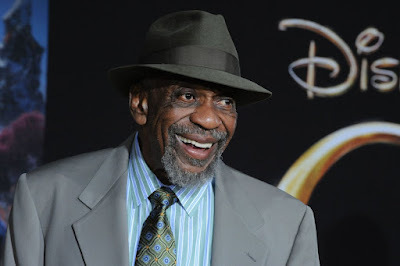
June 28, 2024
High Anxiety: Mid-Level Mel Brooks
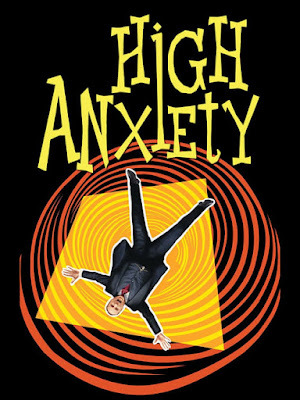
What would we do without MelBrooks? He’s been the comic genius behind TV (Get Smart) and movies (2000Year Old Man), but I associate him mostly with movies, as a writer, adirector, and sometimes a star. His first directorial outing was in 1967, aswriter/director of The Producers, which introduced the world to theoutrageous combination of Zero Mostel and Gene Wilder, as well as to the mosthilariously tasteless production number of all times, “Springtime for Hitler.”I suspect that if you watch the film you’ll agree it runs out of steam midwaythough, but Brooks would later enlarge it into a Broadway musical blockbuster.
I’m fond of The TwelveChairs, Brooks’ off-the-wall 1970 look at Tsarist Russia. (I’ve adopted itsoriginal song, “Hope for the Best, Expect the Worst,” as my own personalphilosophy of life.) But Brooks’ greatest year was arguably 1974, when heintroduced not one but two comedic masterworks, Blazing Saddles and YoungFrankenstein. Both showcase Brooks’ talent for parody, his success atspoofing familiar genres like the Western and the classic monster flick. Nextcame the considerably more effortful Silent Movie, featuring Brooksfavorites Marty Feldman and Dom DeLuise, along with a cast of Hollywood starsin cameo roles. In 1977 it was back to a genre spoof: Brooks’ High Anxiety (despiteits title’s witty nod to High Society) is dedicated to poking fun at thesuspense classics of shockmeister Alfred Hitchcock. Many critics have notedthat Hitchcock’s films are themselves frequently tongue-in-cheek, and don’tneed to be parodied. Still, there’s fun to be had in seeing how many Hitchcockreferences you can spot.
First of all, the jaundicedlook at the whole field of psychiatry reminds us of Hitchcock’s 1945 Spellbound.Here Brooks himself plays an eminent psychiatrist, Dr. Richard Thorndyke,who has flown out to California to lead the Psycho-Neurotic Institute for theVery, Very Nervous, a place thatis clearly not as salubrious as it seems. (Thorndyke’s name is an immediatereminder of Cary Grant as Roger Thornhill in North by Northwest.) Despite his sterling reputation, Thorndykeis suffering from a Brooksian psychological ailment called “high anxiety,”which seems a cross between vertigo and acrophobia. He is not helped by theinstitute’s location, high above the rocky shoals of the Pacific, and histroubles are compounded when he’s victimized by a flock of pooping pigeons, àla Hitchcock’s The Birds.
Things go from bad to worsewhen Thorndyke attends a conference in San Francisco, where he’s housed on the14th floor of the brand-new Hyatt Regency. This real locale wasfamous in its day for being built around an enormous atrium that would makealmost anyone dizzy if she were on the top floor looking down. Of coursethere’s a beautiful, mysterious Hitchcock blonde (Madeline Kahn) who needs hishelp, leading to the film’s single most hilarious scene: when they sneak a gunpast airport security by posing as the world’s most annoying traveling couple.Predictably the film’s climax is staged as an homage to Hitchcock’s Vertigo,with Dr. Thorndyke forced to pursue the bad guys up the high twistedstaircase of the institute’s bell tower. Of course villains like ClorisLeachman and Harvey Korman get their comeuppance, and everyone else liveshappily ever after. Kudos to the1940s-style black & white cinematography and the surreal elements borrowedfrom Salvador Dali’s Spellbound dream sequence.
I’m told Hitchcock himselfwas mightily amused. He reportedly sent Brooks a case of six magnumsof fine wine with a note that read, "A small token of my pleasure, have noanxiety about this."
A very happy 98th birthday to the 2,000-Year-Old Man!
June 25, 2024
An Ode to the Elastic, Electric Donald Sutherland
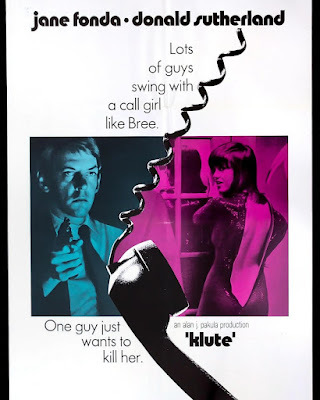
I first knowingly encounteredthe late Donald Sutherland in 1968, in an odd little British film called Joanna.Then and now, I’ve been unsure if Joanna was intended as an ode toSwinging London (the miniskirts! the casual sex!) or a morality tale or aspoof. It did have a very pretty leading lady, a score by Sixties fave RodMcKuen, and several hunky young men. It also had Sutherland as the wealthy butterminally ill Lord Peter Sanderson, who hosts Joanna and her groovy friends athis sumptuous home in Morocco. When he came on screen, I thought I had neverseen such a weird-looking person. There was a fey quality to him that had mecompletely baffled: was there some sort of comment being made about hissexuality? I didn’t know, but I didn’t much care. Joanna was a moviethat didn’t invite hard thinking.
It took a while to realizeI’d seen Sutherland a year earlier in a vastly different role, that of a not-too-brightSoutherner named Vernon Pinkley who hilariously steps in to impersonate ageneral in a World War II action drama, The Dirty Dozen. That was thething about Sutherland: you couldn’t pin him down. Even his nationality seemedflexible: the Canada-born Sutherland played British and American roles withequal conviction.
It was in 1970 thatSutherland had his big Hollywood breakthrough. Though for fans of thelong-running TV series, Alan Alda will always be the REAL star of M*A*S*H, RobertAltman’s original film starred Sutherland as Hawkeye Pierce. He and ElliottGould as best buddy Trapper John McIntyre found stardom as two youngbattlefield surgeons who cope with the horrors of the Korean War by way ofoutrageous antics. One year later he played the title role in Klute, aneo-noir thriller best remembered for Jane Fonda’s Oscar-winning role as aprostitute being stalked by a killer. Sutherland’s role is that of a detectivewho becomes Fonda’s protector and then her lover. The powerful connectionbetween Fonda and Sutherland, whichallegedly spilled over into their personal lives, led to Sutherland’s deepinvolvement in Fonda’s crusade against the Vietnam War.
Another intensely dramaticrole for Sutherland was opposite Julie Christie in 1973’s psychologicalthriller, Don’t Look Now. The eerie Venice-set drama, brilliantly directedby Nicolas Roeg, focuses on young parents trying to get past the accidentaldeath of their young daughter. In the midst of their all-consuming grief, there’s a sex scene that raised many eyebrowsfor its convincing eroticism, leaving some viewers certain that the intimacy onscreen was genuine. (Sutherland hasstaunchly denied this.) He was also a grieving father in Robert Redford’sOscar-winning Ordinary People (1980), though most of the film’saccolades went to Mary Tyler Moore and young Timothy Hutton, who played hiswife and his surviving son. But none of this should imply that Sutherland onlytook on somber roles. He played everyone from heroes to goofballs, like thepot-smoking professor in National Lampoon’s Animal House. He was even astuffy British patriarch (and Keira Knightley’s father) in Joe Wright’s 2005version of the Jane Austen classic, Pride and Prejudice, as well as thechief villain in The Hunger Games. Though Oscar nominations eluded him,the Academy in 2017 granted him an honorary Oscar “for a lifetime of indeliblecharacters, rendered with unwavering truthfulness."
Today son Kiefer (named afterDonald Sutherland’s very first director) carries on the family commitment toscreen acting. But it’s unlikely he’ll ever top his father’s long and variedlist of achievements.
June 18, 2024
Good Housekeeping: “The Remains of the Day”
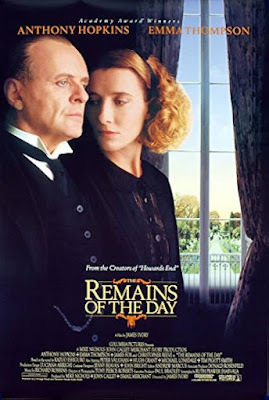
The lineage of The Remainsof the Day is unusual. It began as a 1989 novel by Kazuo Ishigoro, a nativeJapanese who was raised in England. Though Ishigoro’s first two novels dealwith the nation he had left at age 5, The Remains of the Day marked histurn toward strictly British subject matter. Following the massive success of thisnovel, he has explored science-fiction material (Never Let Me Go),dabbled in screenwriting (for the Oscar-nominated Living) and won the 2017 Nobel Prize in Literature, among other majorhonors.
The screen version of TheRemains of the Day, released in 1993, started out (to my surprise) as aMike Nichols project with a screenplay by Harold Pinter. When the film passedinto the hands of the Merchant-Ivory team, Pinter severed ties, thoughapparently some of his work was used, while Nichols stayed involved as aproducer. The resulting film benefits from Ismail Merchant’s, James Ivory’s andRuth Prawer Jhabvala’s comfort with literary adaptations, as well as theirimpressive visual sense. A film about a head butler and a housekeeper numberingtheir days in service to Lord Darlington requires a functioning manor house asits setting. The Merchant-Ivory reputation was such (after the artistic successof films like A Room with a View and Howard’s End) that the filmmakers were able to persuadepreviously reluctant property owners to open their doors to cast and crew.Clearly, the resulting film is a triumph of logistics. Several country homeswere used in combination, including Dyrham Park for the house’s exterior anddriveway; Powderham Castle for some gracious public rooms and a spectacularturquoise stairway; Badminton House for servants’ quarters and a conservatory. Onscreen it all looks like one impressive stately mansion.
Though Ishigoro wrote hisnovel in the first person, from the perspective of a starchy and deeplytraditional butler, the screenplay’s basically third-person point of viewhardly detracts. In Anthony Hopkins’ performance we well understand how much Mr.Stevens is bound by his own past, as well as by an unrelenting sense of duty tothose he sees as his betters. Playing opposite him is the always convincingEmma Thompson, as a housekeeper who would like to be braver than she is. Thesetwo would make for a natural pairing, except that their basic timidity holdsthem back. This is best acknowledged in what the filmmakers call “the bookscene,” in which Miss Kenyon briefly sets aside her usual decorum to playfullywrestle away from Stevens the mysterious book he is reading in his rareoff-hours. The fact that he rebuffs her, for no very good reason, is awonderful indicator of his habitual strait-laced outlook (is he deeplyrepressed, or just shy?).
I first saw this film when itwas in theatres, and best remembered it for that very English sense ofstiff-upper-lip self-denial. What I’d forgotten completely is how much the filmhas to say about the politics of the pre-World War II era. Lord Darlington, itappears, has a sentimental affection for German culture. Though at base he’s awell-meaning man, his money and social position help him prop up the reputationof the Nazi party within his own country. What’s deeply disturbing is thatStevens, as his loyal retainer, will not permit himself to think independentlyof the master of the house, even when the lives of others (like two Jewishimmigrant girls in his kitchen) are at stake. So he loses not only a chance atlove but also, ultimately, his self-respect. A sad ending for one who puts dutybefore all else.
June 14, 2024
Weird -- The Daniel Radcliffe Story
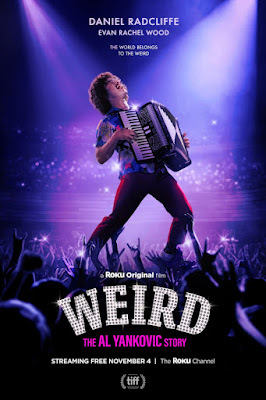
With the Tony Awardsceremony, dedicated to honoring the best of Broadway, coming closer—it’sscheduled for 8 p.m. Eastern time on Sunday, June 16—I’m looking forward, asalways, to catching glimpses of stage magic. One huge difference between moviesand live theatre is that anyone can watch a hit movie, whether in a cineplex or(increasingly) over cable. To see a theatrical hit with its opening night castintact, you generally need to travel to New York City and pay hundreds ofdollars for your seat. Since I can’t often do that, I’m forced to livevicariously through theatre reviews and through the snippets performed onprimetime TV in the course of the Tony show.
Invariably, some of the topnominated plays are headlined by stars best known for their work in Hollywoodfilms. This year’s nominees include such lead performers as Live Schreiber,Michael Stulberg, Jessica Lange, Sarah Paulson, Rachel McAdams, and EddieRedmayne, hailed for his performance as the eerie emcee in a revival of Cabaret.But I was especially tickled by the inclusion of Daniel Radcliffe for hissupporting turn in the revival of one of my favorite Sondheim musicals, MerrilyWe Roll Along.
Radcliffe, now 34 (can itbe?) is of course best known as the title character in all 8 Harry Potter films,bringing to convincing life the bespectacled young hero in J.K. Rowling’swildly popular series of fantasy novels. In 2001, when not yet in his teens, hebecame an international superstar as the plucky and magical Harry. For manyactors, being identified with an iconic character ultimately leads to careerdeath: no one is willing to see them try on other roles. But after a fulldecade of playing Harry, Radcliffe has managed to move beyond his most famous characterization,both on the screen and on stage. In film and on television, the diminutiveRadcliffe seems to have headed straight for the oddball roles, like that of atalkative corpse in the surrealistic Swiss Army Man (2016), the firstfilm by the two Daniels who went on to win Oscars for Everything EverywhereAll At Once. I managed to miss that, but can enthusiastically recommendRadcliffe’s Emmy-nominated performance as Weird Al Yankovic in 2022’s Weird: The Al Yankovic Story.Wearing a Hawaiian shirt and a curly ‘fro out to there, Radcliffe ishilarious as the writer of goofy parody songs who plays the accordion, romancesMadonna, and foils the schemes of a South American drug lord.
Starting in 2007, on stage inLondon, Radcliffe shook off his Harry Potter image by appearing as the deeplytroubled Alan Strang in Equus, a play that required of him a strange andgraphic nude scene. For Broadway, he remained covered up as the leading man inthe satiric musical How to Succeed in Business Without Really Trying,playing the song-and-dance role once made famous by Robert Morse and thenrevived by Matthew Broderick. His current Broadway gig, Merrily We Roll Along,casts him as the writing partner of a hotshot composer who squanders hismusical talent on his way to fame and fortune. There’s a marvelous Sondheimscore, of course, featuring a vicious rant for the much put-upon characterplayed by Radcliffe (and, not so long ago, by Lin-Manuel Miranda). Now he’s upfor a Tony, as are the other two members of the show’s central trio. No, Ihaven’t seen this staging of a play that was once a big Sondheim flop but isnow a really hot ticket. But I can’t help rooting for Daniel Radcliffe: there’ssomething magic about him.
Beverly in Movieland
- Beverly Gray's profile
- 10 followers



